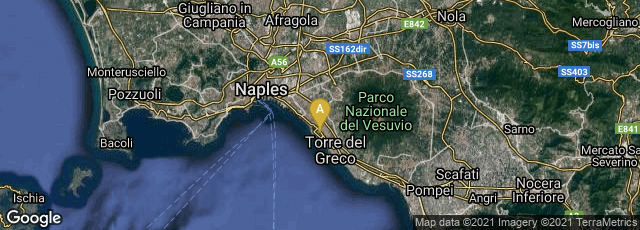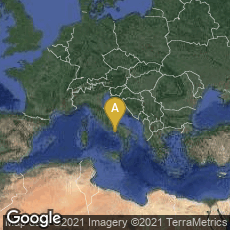

On March 21, 2016 Emanuel Brun and colleagues published experimental results in PNAS.org "Revealing metallic ink in Herculaneum papyri."
"Significance
"The common belief has been that no metal is present in Greco-Roman inks. In this work, we show that lead is present in the ink of two Herculaneum papyrus fragments. The concentration found is very high and not to be explained merely by contamination. The metal found in these fragments deeply modifies our knowledge of Greek and Latin writing in antiquity. Moreover, these concentration values allow the optimization of future computed tomography experiments on still-unrolled Herculaneum scrolls to enable the recovery of texts in the only surviving ancient Greco-Roman library. The possibility of using additional material to trace down ruled lines guiding the scribes' writing along straight lines is also addressed. We demonstrate that no additional material was used for this goal."
The authors write:
"... Pliny the Elder carefully describes the carbon-based ink used in his time, which was obtained from smoke from wood burnt in furnaces, without any deliberate addition of metal (1). In the case of the most ancient manuscripts, and particularly the literary papyri both in Greek and Latin, it has been assumed that the ink used for writing was carbon-based, at least until the fourth to fifth centuries AD (4, 6, 7). The occasional use of metallic ink before this period has been known: it is reported to be used for writing secret messages in the second century BC (8), and Pliny remarks that papyrus soaked in tannin turns black after contact with a solution of iron salt (1). Moreover, Wagner et al. demonstrate the use of metal in inks in an ancient Egyptian papyrus (9), although none of those special inks has ever been mentioned in a Greco-Roman calligraphic context. However, a metallic iron-gall mixture was definitely elaborated and then adopted as a new writing ink for parchments beginning from around 420 AD (10, 11), because for this different kind of support, another, more adherent, ink was required. Thereafter, metallic inks became the standard for parchments in late antiquity and for most of the Middle Ages (4, 7).
"In this work, we study the chemical composition of papyrus fragments carbonized by Mount Vesuvius' eruption in 79 AD and found in the Villa dei Papiri at Herculaneum between 1752 and 1754. Some fragments from the villa were analyzed on several occasions (12⇓–14). In ref. 14, no metal was found, contrary to in refs. 12, 13, in which Seales et al. found lead and strontium in the ink at relatively high concentrations. Unfortunately, the analysis, which was made on several spots of 0.5 mm, did not include any elemental mapping. In this work, we address the issues left open in ref. 14 by a careful and detailed chemical and structural analysis of two fragments, using nondestructive synchrotron X-ray based techniques. The two multilayered fragments that were analyzed are of different sizes and come from the Institut de France’s collection in Paris, which is composed of six Herculaneum papyri donated by the King of Naples to Napoleon Bonaparte in 1802."